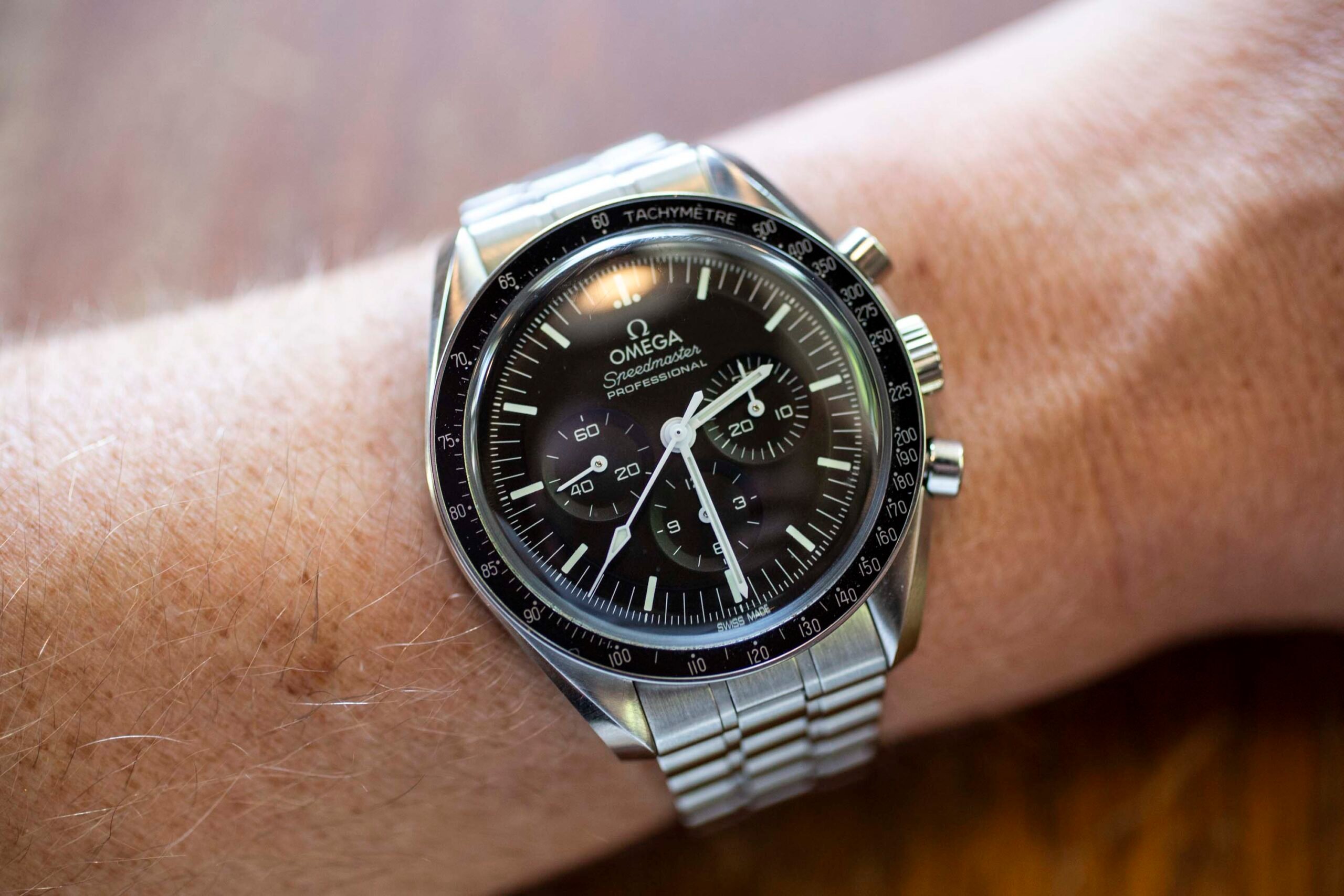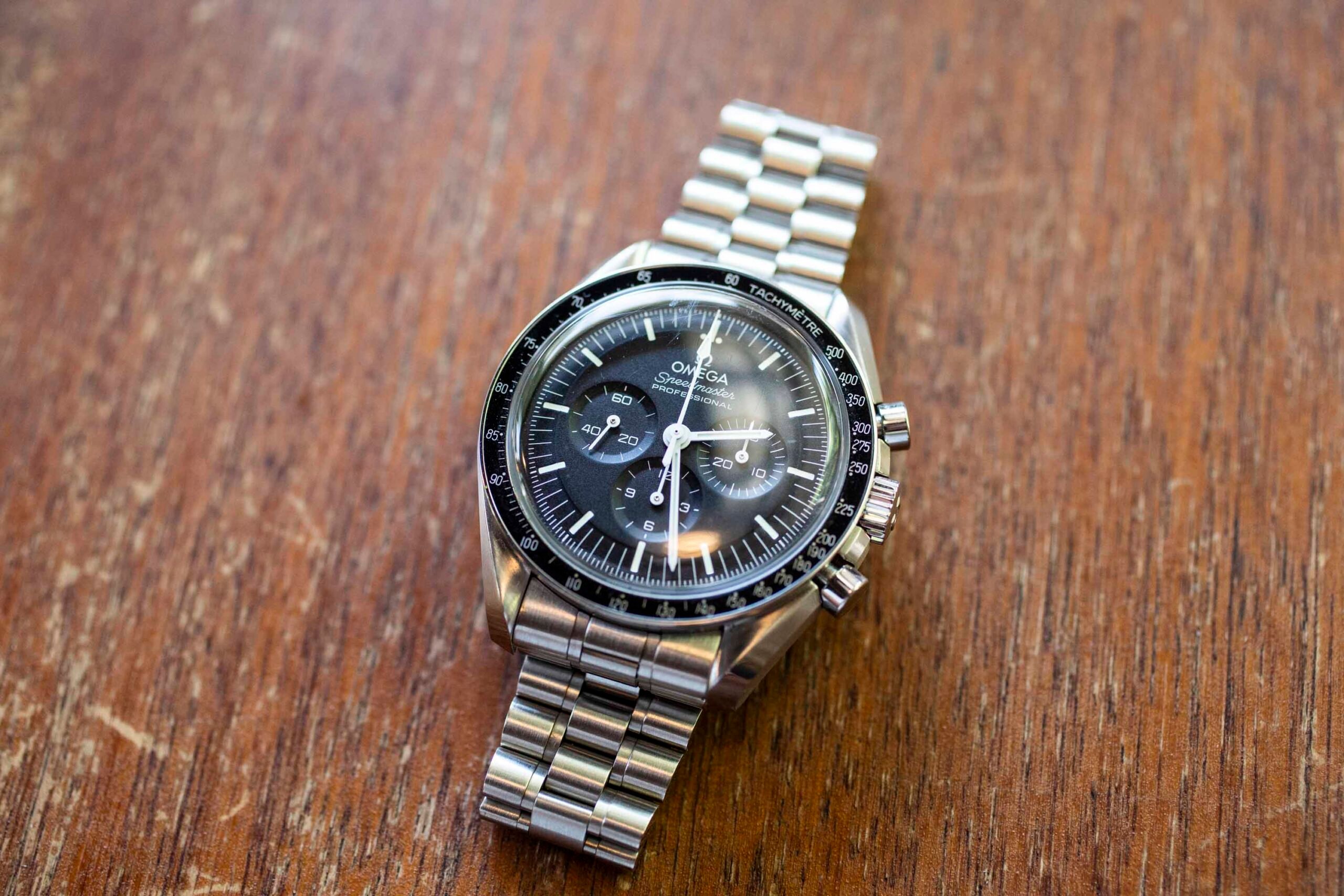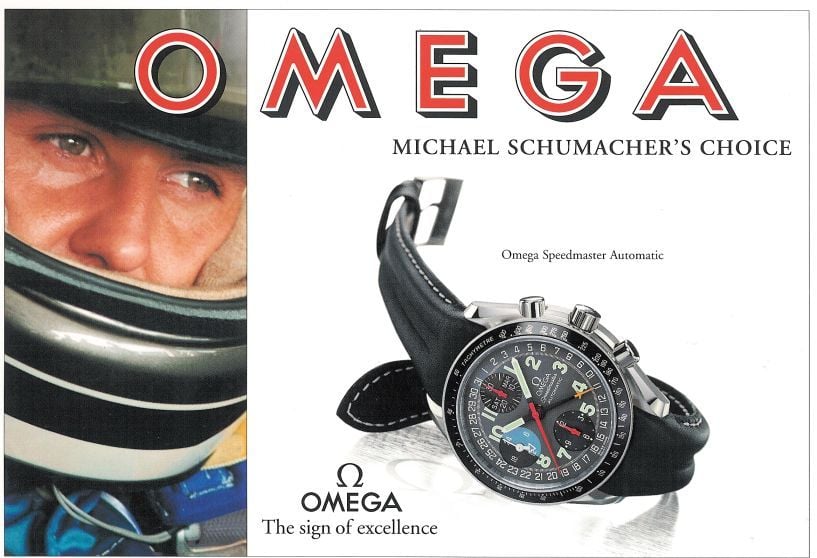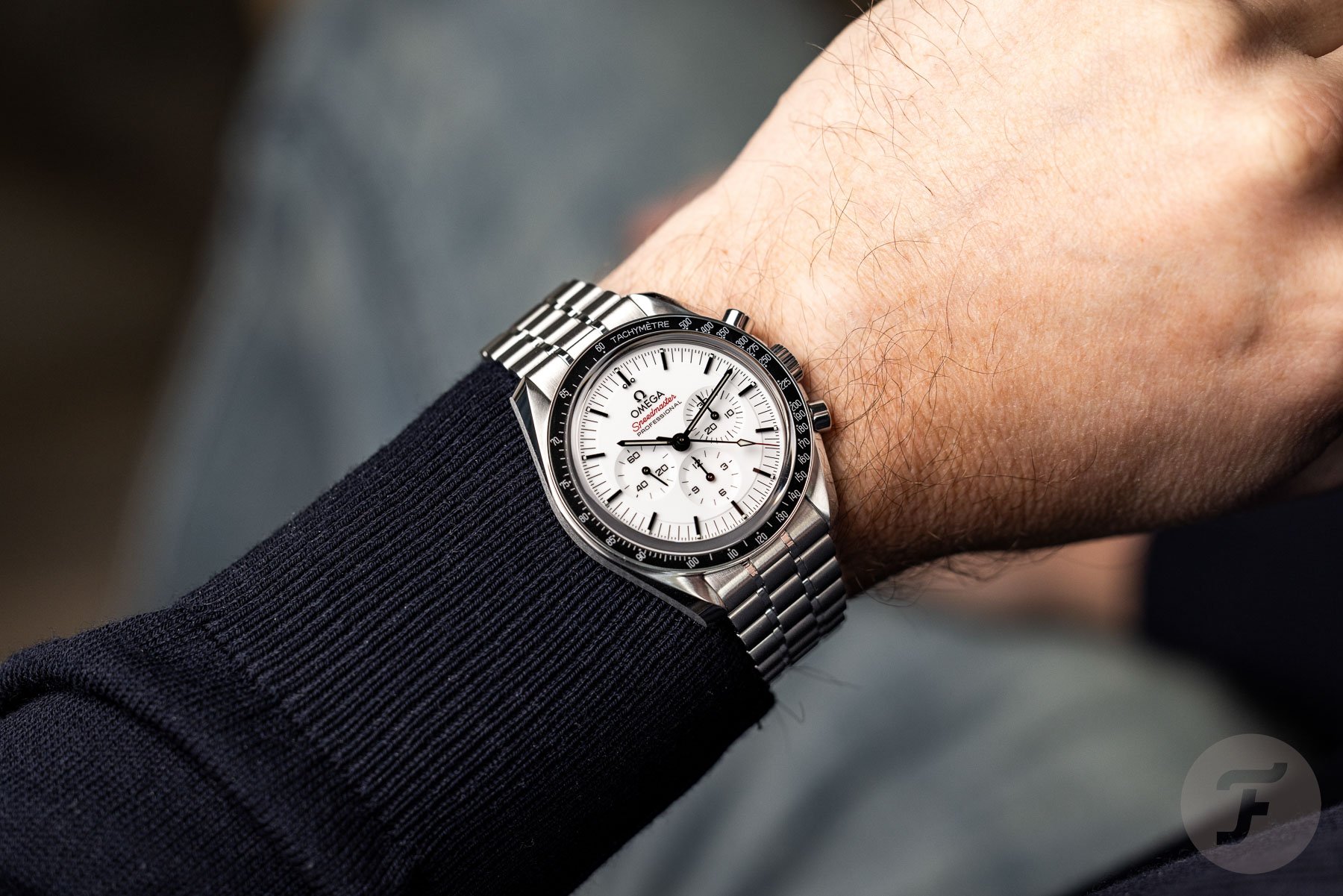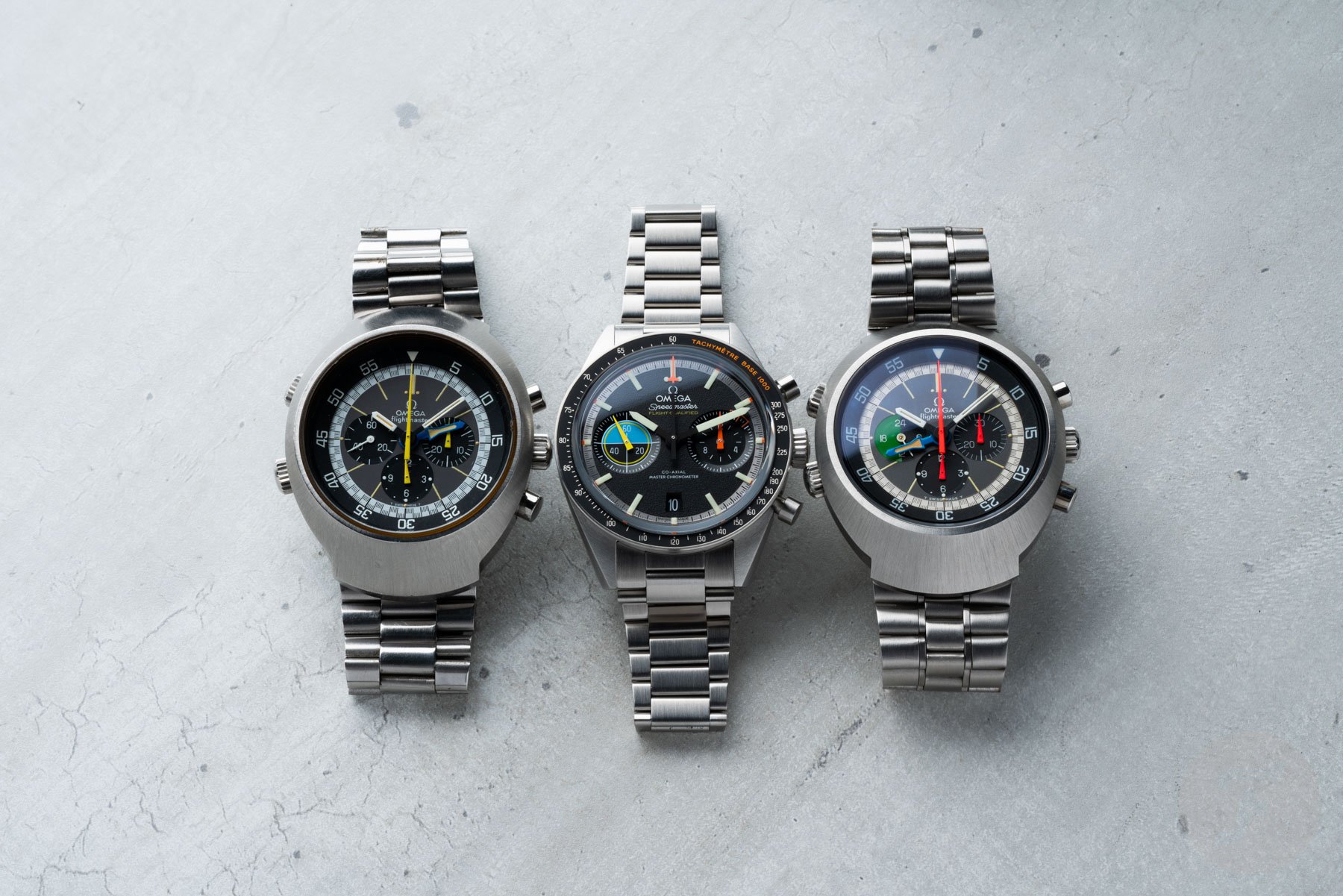I Should Have Bought A Speedmaster As My First Watch
The Omega Speedmaster is a great watch. That’s probably not a controversial statement. But is it a great first Swiss watch for those looking to start their way along the winding path of their horological journey? After some reflection on mine, I’d say it is. Let me explain why.
The Omega Speedmaster is an icon. It comes in multiple variations with automatic or hand-winding calibers, different case sizes and shapes, as well as various dial colors. There is, quite literally, something for everyone. We have seen significant price increases from brands with iconic designs, such as steel sports watches from Rolex, Jaeger-LeCoultre, and Cartier. The Omega Speedmaster offers one of the most iconic designs in horology and is still relatively attainable without annoying wait lists (for regular-production models). Even better, when you cast your eyes to the secondary market, we can see a multitude of Speedmaster references that offer significant savings compared to new offerings.
An unstable era
Let’s briefly cast our minds to Rolex, Jaeger-LeCoultre, and global geopolitics. A dominant player in the world of watches, Rolex is a cultural phenomenon. Demand for Rolex sports watches was already high before COVID-19 struck. However, during the spike in interest in the hobby during the COVID-19 crisis, the demand for steel Rolex sports models seemed to grow out of control. The demand for these watches outstripped supply, and, among other issues, led to a degree of resentment among some prospective buyers as they found it impossible to buy a Rolex watch.
This was, in part, fanned by the commensurate growth and interest in watch-related content on online platforms, particularly social media. Then, as the disruptive threat of COVID-19 seemed to dissipate a little in 2023, we saw brands double down on significant price increases across different model lines. In 2023, for example, we dedicated an analysis piece to the price hikes brought into effect by brands like Jaeger-LeCoultre. In that feature, we noted: “The Omega Speedmaster Professional will be priced at €7,500 as of February 1st (it was €7,100). The Jaeger-LeCoultre Reverso Duoface? It is now €13,100 instead of €9,100 not even a year ago. That’s a price increase of nearly 44%. It almost sounds like Rolex is keeping it sane for its sports models with increases of approximately 2%. The catch here is that you can’t buy them anyway.”
Rising watch prices and the Omega Speedmaster
These issues are still present in 2025. Demand for watches has cooled down, and price increases sting a bit. Last year, I asked, “Are Rising Watch Prices Changing The Playing Field For Enthusiasts?” and looked at the rising prices of Tudor watches. My colleague Jorg also explored this topic in his article “A Closer Look At The 2024 Tudor Price Increases — Will They Have An Effect On The Brand’s Success?” Now, though, we are in a different economic and geopolitical landscape, with the administrations of superpowers inspiring global uncertainty. With all this afoot, and even taking into account the fact that the Omega Speedmaster has seen price increases, it remains, in my mind, a pretty compelling watch for the asking price.
So, let’s get back to the subject at hand — the Omega Speedmaster. It is within this context that I make the case that purchasing an Omega Speedmaster as your first Swiss watch is a very good idea indeed. Sure, if you’re after an “investment,” there are better options out there. However, the Omega Speedmaster is available in multiple price segments across the secondhand market, and it has a rich horological history that is almost without peer in the 20th century.
Why the Omega Speedmaster is a constant in an inconstant world
If I were to go back in time and put myself in the shoes of that doe-eyed enthusiast who bought his first new Swiss watch in 2019, I would purchase a used Omega Speedmaster. What did I buy back in 2019? I bought a brand-new Doxa Sub 200 Sharkhunter on the factory beads-of-rice bracelet. It was a fantastic watch that suited my lifestyle, but it didn’t stick around. I ended up selling the watch a couple of years later and getting a blue Tudor Black Bay 58.
I should have bought an Omega Speedmaster. Back then, on the secondary market, a Speedy did not cost all that much more than a brand-new Tudor Black Bay 58, at least here in Australia. While the Tudor Black Bay 58 is a fantastic watch, it does not have the same level of design clarity and tradition that an Omega Speedmaster provides. What do I mean by “design clarity”? Well, if you’re familiar with vintage Tudor Submariners (which the 58 riffs off), you’ll note that the Black Bay 58 has elements from multiple Tudor Submariner references within its makeup. There’s a lot of mixed DNA there, so to speak. The unguarded crown and coin-edged bezel is very 1950s, the dial is 1960s, and the handset is 1970s.
The Omega Speedmaster has a core design ethos
The Omega Speedmaster has seen many iterations over the decades, but the fundamental core DNA is there. Yes, you can find quirky examples that don’t reflect that core DNA so clearly, but there has been a design ethos with the Speedmaster that is undeniable. Now, when you are a rookie watch enthusiast, considering a core design ethos when buying a watch may not be so important. But the more you get into this hobby, I feel it’s fair to say the more it matters.
We haven’t even discussed specifications or specific references of the Omega Speedmaster yet. Generally speaking, though, as one’s first Swiss watch, I would err towards a 42mm Speedmaster with a classic black dial and probably even the 1861 caliber. However, I do believe there is pretty much an Omega Speedmaster out there for everyone, including (for me) something like the recently released Omega Speedmaster Pilot Flight Qualified. This particular watch has been calling me since its debut, even though it is very much not a traditional Speedmaster. It offers a lot of watch for the asking price (although it would always be nice if things were less expensive).
Concluding thoughts
So, that is my broad case for why a used (or new if you’re so inclined) Omega Speedmaster is the perfect first Swiss watch. It comes down to the sheer number of choices out there, the historical pedigree, quality, and the joy of owning something truly iconic. Once again, I believe that owning something with a certain focused design ethos is worth the experience.
I can see why RJ and others collect Speedmasters. For me, I think one would be enough, and I suspect that it would have to be a Pilot Flight Qualified. But what do you think, Fratelli? Would you recommend buying an Omega Speedmaster as one’s first Swiss watch? Let me know if you would and what particular reference you’d suggest in the comments!

